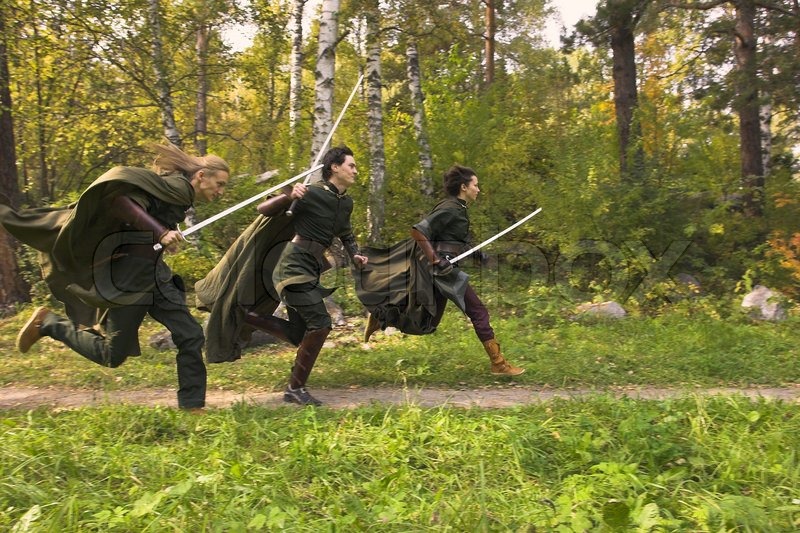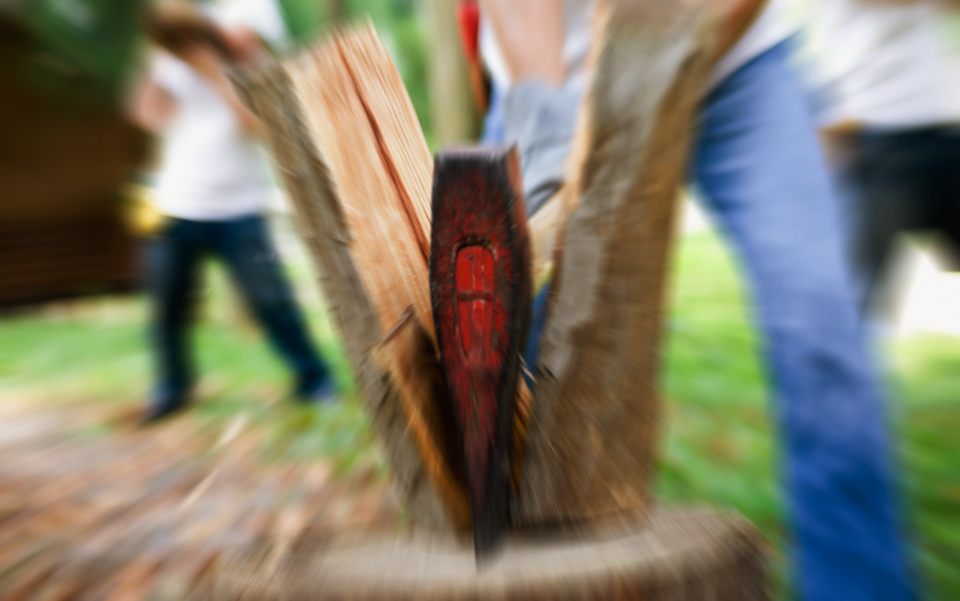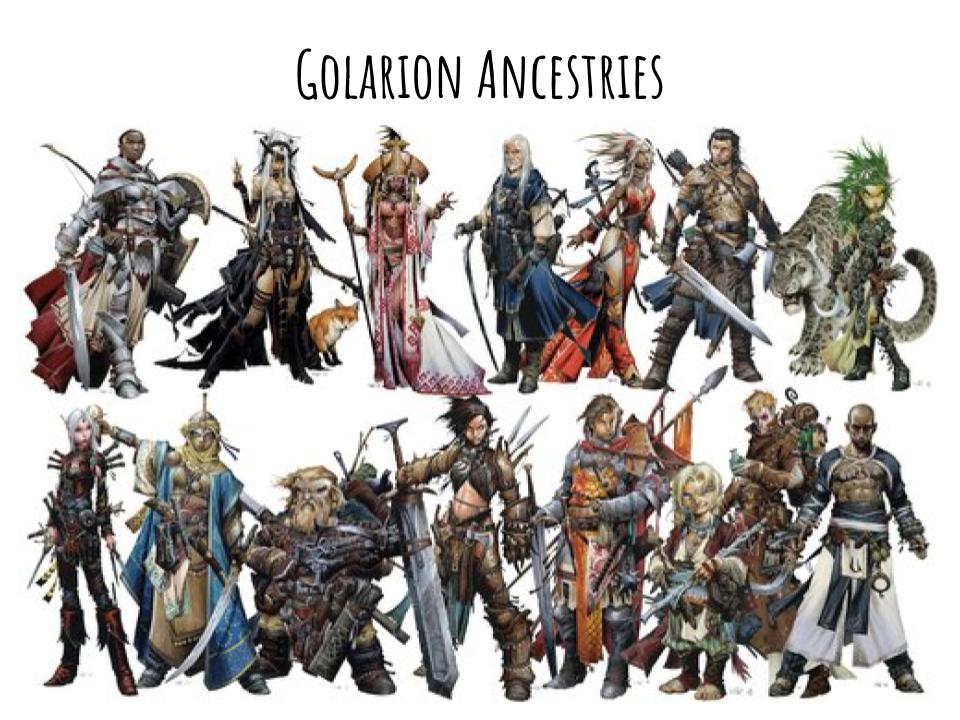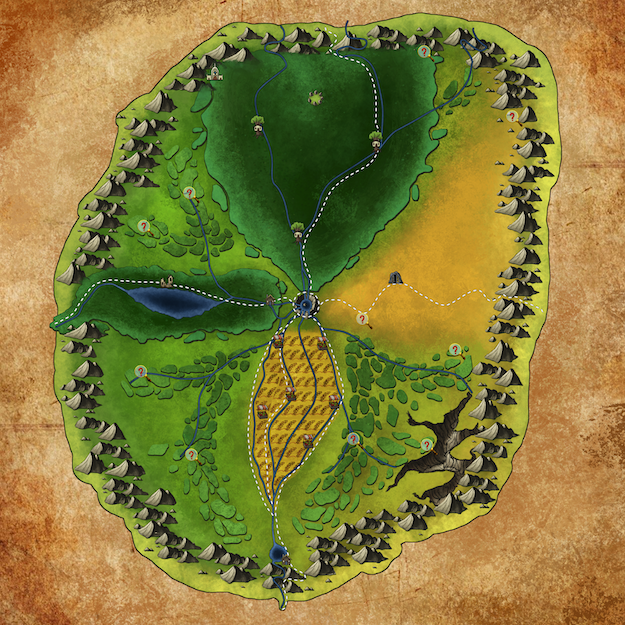Lets continue to look at how to correctly set the difficulty of your adventure. There’s a few other topics I’d like to go over, so lets dive right in.
Pacing
How fast the PCs engage different encounters can have a significant impact on an adventure’s difficulty. Fighting multiple battles in a row can be much harder than if the PCs face one threat at a time. This isn’t to say not to string encounters together, just be aware of the added challenges it brings when the PCs don’t get a chance to rest between one encounter and the next.
 In games like Pathfinder, the PCs are likely going to want to heal outside of combat with wands and channeled energy. Be aware of this after particularly damaging fights. Likewise, you may want to keep some encounters close enough together that a particularly efficient group of PCs might want to fight one encounter right after the next before their short term spells and abilities wear off.
In games like Pathfinder, the PCs are likely going to want to heal outside of combat with wands and channeled energy. Be aware of this after particularly damaging fights. Likewise, you may want to keep some encounters close enough together that a particularly efficient group of PCs might want to fight one encounter right after the next before their short term spells and abilities wear off.
In games like Starfinder, the PCs will want to take 10 minute rests to spend a point of resolve and recover all of their stamina. Try and plan for these in the adventure. Anytime you have a particularly fast pace where the PCs might not get to sit down for a minute, try and build in an artificial way for them to get that rest. Perhaps they have a 15 minute tram ride to get to the next location. There could be a 10 minute decryption sequence to get through a sealed blast door. Put them in there to help remind players to take a rest, and to signal to them that they might want to ensure they’re at full power before the next part of the adventure.
Chaining Encounters
Dungeons can sometimes have encounters that are very close together, making for some fast paced action. The danger here is if one encounter spills into the next. Not only is this going to mess up your CR by fighting multiple battles at once, but it’s going to throw off your pacing as well.
You can control this by adding barriers, white noise like an engine or waterfall, or anything else that will help muffle the sounds of battle from one encounter to the next. You can also make it more difficult for an enemy to flee from one battle to another if there are obstacles in their way, such as doors. Pathfinder is particularly helpful in the way Perception checks are penalized not only by distance but by walls and doors intervening. Use this to your advantage to ensure the troop in the barracks cannot too easily add the tower guards into the fight. Unless you want it that way.
If you plan on chaining encounters, then build them all up as either one encounter, or two easy encounters that become hard if they chain together. In this way, you can reward your PC’s stealth and guile if they can keep the encounters separated.
NPCs
Speaking of NPCs… building an NPC in a game like Pathfinder can be fraught with pitfalls. Many of the design choices we’d make when building a PC do not apply when building an NPC. I’m going to split these issues into three main areas: optimization, generalization, and specialization.
Optimization
 When building a PC, a player will often attempt to optimize specific aspects of their character for maximum effect. They’ll optimize the barbarian for melee damage, the sorcerer for saving throw DCs, and the wizard for buffs and debuffs. PCs can get away with this for a couple reasons: they’re the heroes and are supposed to be victorious, they are part of an often pre-planned team and know what role they’re responsible for.
When building a PC, a player will often attempt to optimize specific aspects of their character for maximum effect. They’ll optimize the barbarian for melee damage, the sorcerer for saving throw DCs, and the wizard for buffs and debuffs. PCs can get away with this for a couple reasons: they’re the heroes and are supposed to be victorious, they are part of an often pre-planned team and know what role they’re responsible for.
With an NPC if you optimize for damage output or save DCs, your NPC is likely to be too powerful for the players to deal with. Try and stick to the monster building guidelines for NPCs as well as monsters. With all of those class features in there, it can sometimes be difficult, but stay as close to them as you can.
Generalization
NPCs should be more generalized to deal with different threats. Give them both melee and ranged attacks. Starting at 5th level or higher, you’ll want to make sure they can deal with flying and invisible opponents. If they deal energy damage, see if you can give them at least 2 types of damage. Afterall, the uber powerful fire sorcerer is cool, but if the party uses protection and/or resist energy, then the sorcerer becomes completely ineffective.
Give your martial focused NPCs more than one weapon, and even more than one weapon of each type if they’re better at ranged or melee. PCs may disarm them, sunder their equipment, or cause them to drop a weapon some other way. It’s for this reason I like to give all of my NPCs daggers. They’re a light melee and ranged weapon, so they fill multiple rolls. It’s also not unheard of to have a fantasy genre character walking around with a dagger on their belt or strapped to a boot.
Specialization
Lastly, use the opportunity to make a highly specialized build that you might not see other places. For example, you might not build a bull rush specialist for a long-running campaign. There’s only so much you can do with pushing people before you realize your build is ineffective as a PC. However, as an NPC a bull rush specialist can do great things when balancing on top of a series of standing stones, or when fighting on a rope bridge, or near the edge of a rapidly flowing river.
 Take a step back and figure out how to make the abilities of the NPC really work with the environment and the situation. Things like this can make a fight memorable and let you play around in a character design space you might not otherwise be able to dabble in.
Take a step back and figure out how to make the abilities of the NPC really work with the environment and the situation. Things like this can make a fight memorable and let you play around in a character design space you might not otherwise be able to dabble in.
Go forth and write interesting encounters!






